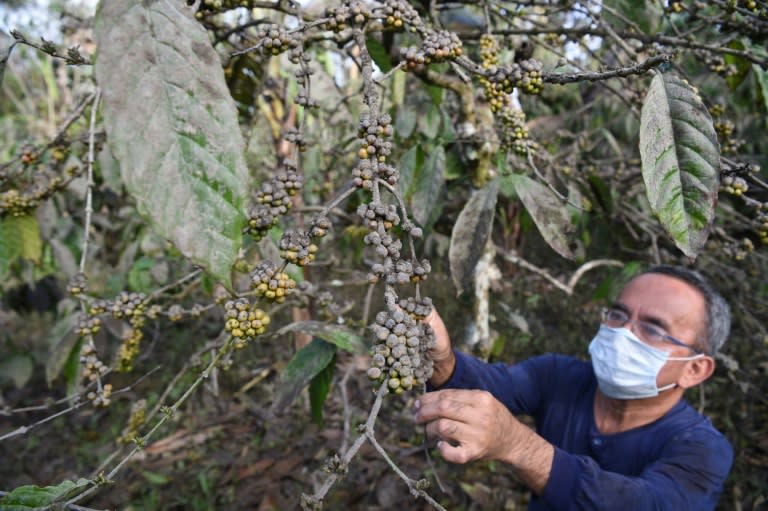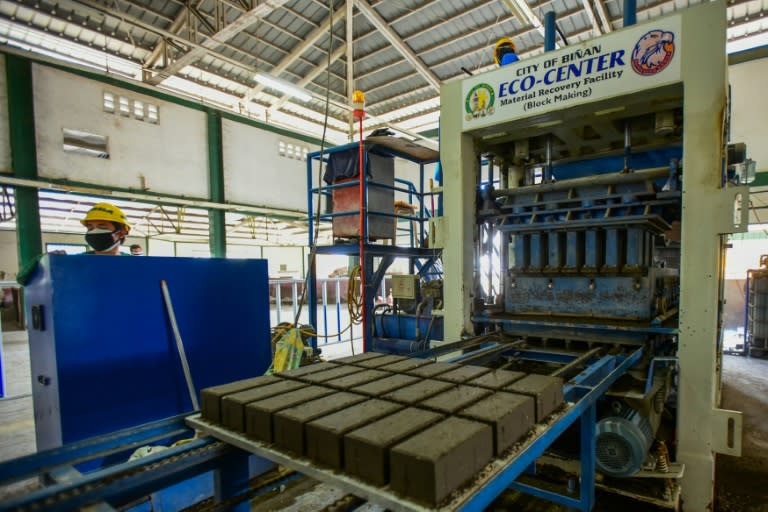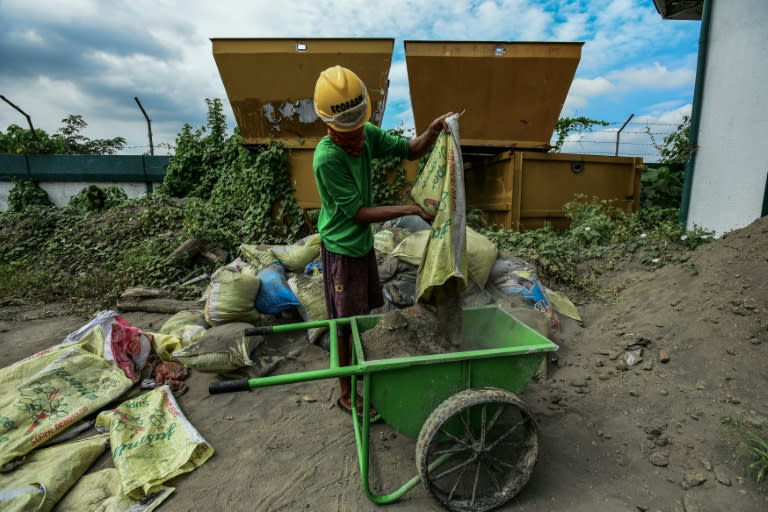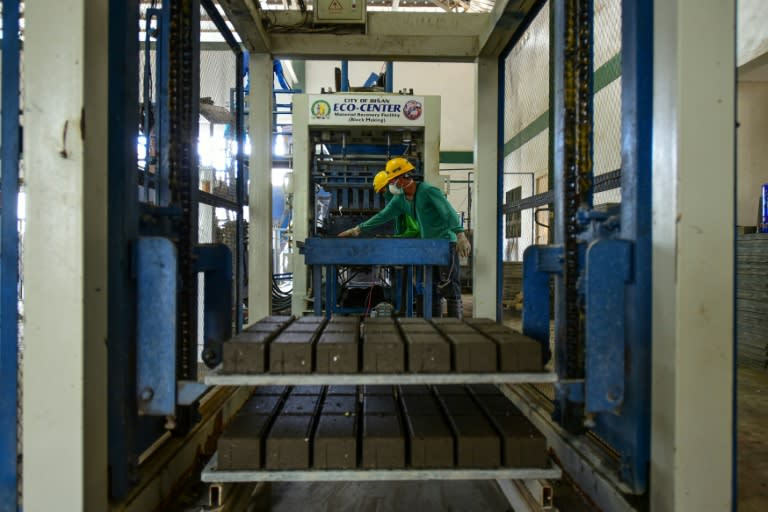Lost and damaged: Philippine volcano steals livelihoods
Ron Lopez, AFP•January 17, 2020


2 / 2
There are already signs coffee plants have been heavily damaged (AFP Photo/Ted ALJIBE)
Decimated fish, scarred coffee plants and vanished tourists: the Taal volcano eruption in the Philippines has inflicted significant damage on the livelihoods of tens of thousands and is expected to cause more.
When Taal exploded to life Sunday it spewed towering columns of fine grey ash, which officials said destroyed crops and killed off potentially tonnes of fish raised in the lake that rings the volcano.
"We lost a lot of money because all our fish are gone," said Cesario Rodriguez, 34, a fish farmer. "We just need to find a way to survive."
It didn't help either when government health officials warned people not to eat the fish as it could have been contaminated with volcanic sulphur, though the nation's health agency told AFP no formal ban is in place.
Decimated fish, scarred coffee plants and vanished tourists: the Taal volcano eruption in the Philippines has inflicted significant damage on the livelihoods of tens of thousands and is expected to cause more.
When Taal exploded to life Sunday it spewed towering columns of fine grey ash, which officials said destroyed crops and killed off potentially tonnes of fish raised in the lake that rings the volcano.
"We lost a lot of money because all our fish are gone," said Cesario Rodriguez, 34, a fish farmer. "We just need to find a way to survive."
It didn't help either when government health officials warned people not to eat the fish as it could have been contaminated with volcanic sulphur, though the nation's health agency told AFP no formal ban is in place.
The warning of a further, potentially catastrophic eruption, also led authorities to urge the thriving tourism industry near the volcano -- a popular attraction -- to suspend activity as a precaution.
The nation's seismological agency has issued its second-highest alert, saying Taal could unleash an "explosive eruption" at any time.
With scores of bookings cancelled and many restaurants and hotels shuttered, the eruption will hurt, but no one knows how much yet.
"It going to be negative... 90 percent of the tourism establishments in Tagaytay are closed," said Elinia Sanggalang, a local tourism official, referring to the resort town with stunning views of the volcano.
- 'We're still lost' -
The town alone draws about 5.5 million tourists per year, in part because it is a mere 60 kilometres (37 miles) south of the hot and crowded capital Manila.
Estimates of the harm to farmers and fishermen are already coming in to focus, and authorities say the amount could grow.
The agriculture agency said Friday it estimates so far the volcano caused about $59 million in damage to the industry, which is just about four percent of what the region produced in 2017.
In the Philippines life is already hard for those who have not benefitted from the nation's rapid growth in the past decade. Millions still live on less than $2 a day.
However the pain for some, like coffee growers, will take years before it can be fully calculated.
That's because it takes about two years for coffee plants to mature and begin bearing fruit, said Arnold Bay, an official with a cooperative of about 150 small growers.
There are already signs their plants were heavily damaged, though they hope to still harvest some of their crop.
"It will be difficult for us and for our clients," said Bay. "It will take two years for the farmers to have their livelihood back."
The process of recovering is far from started, especially for the over 60,000 people forced out of homes near the volcano and into evacuation centres.
They can't go home while the threat of a new, powerful eruption remains, so they will live in limbo for now.
"We don't know what to do next," Dandy Belencio, 43, a fish vendor whose home was destroyed in the eruption.
"We're still lost on what will happen to us," he told AFP.
---30---
Filipinos turn volcano's ash, plastic trash into bricks
AFP•January 17, 2020




Officials are combining ash with sand, cement and discarded plastic to form about 5,000 bricks per day (AFP Photo/Maria TAN)
Binan (Philippines) (AFP) - Ash spewed by a Philippine volcano is being mixed with plastic waste to make bricks in an inventive response to the country's persistent problems of pollution and frequent natural disasters.
The Taal volcano burst into life nearly a week ago, sending towering dust columns into the sky and leaving nearby Binan city coated in fine grey powder.
Environment officials did not just clean up the mess but decided to combine the ash with sand, cement and discarded plastic to form about 5,000 bricks per day for local building projects.
"Instead of just piling up the ashfall somewhere, we are able to turn it into something useful. And it includes plastics, too," said city environmental officer Rodelio Lee.
The Philippines faces a waste crisis, with a report last year saying it uses a "shocking" amount of single-use plastic, including nearly 60 billion throwaway sachets per year.
It is also plagued by some 20 major storms annually and regular, powerful earthquakes which together kill hundreds of people each year.
Due to its position on the Pacific "Ring of Fire" zone of seismic activity, it also has periodic volcanic eruptions.
Taal's jets of lava and 15-kilometer (nine-mile) walls of ash have sent more than 70,000 people into evacuation centres and prompted warnings that a far bigger eruption could happen at any time.
With volcanic ash and plastic both in plentiful supply, the officials in Binan see their project as a silver lining.
"During these times, our creativity becomes apparent," said the mayor of Binan, Arman Dimaguila.
---30---AFP•January 17, 2020




Officials are combining ash with sand, cement and discarded plastic to form about 5,000 bricks per day (AFP Photo/Maria TAN)
Binan (Philippines) (AFP) - Ash spewed by a Philippine volcano is being mixed with plastic waste to make bricks in an inventive response to the country's persistent problems of pollution and frequent natural disasters.
The Taal volcano burst into life nearly a week ago, sending towering dust columns into the sky and leaving nearby Binan city coated in fine grey powder.
Environment officials did not just clean up the mess but decided to combine the ash with sand, cement and discarded plastic to form about 5,000 bricks per day for local building projects.
"Instead of just piling up the ashfall somewhere, we are able to turn it into something useful. And it includes plastics, too," said city environmental officer Rodelio Lee.
The Philippines faces a waste crisis, with a report last year saying it uses a "shocking" amount of single-use plastic, including nearly 60 billion throwaway sachets per year.
It is also plagued by some 20 major storms annually and regular, powerful earthquakes which together kill hundreds of people each year.
Due to its position on the Pacific "Ring of Fire" zone of seismic activity, it also has periodic volcanic eruptions.
Taal's jets of lava and 15-kilometer (nine-mile) walls of ash have sent more than 70,000 people into evacuation centres and prompted warnings that a far bigger eruption could happen at any time.
With volcanic ash and plastic both in plentiful supply, the officials in Binan see their project as a silver lining.
"During these times, our creativity becomes apparent," said the mayor of Binan, Arman Dimaguila.
No comments:
Post a Comment